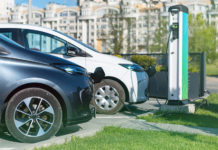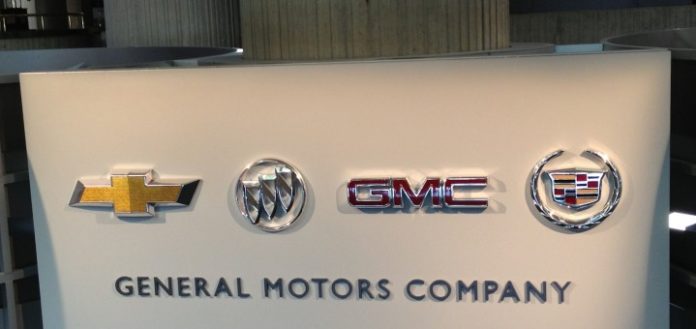“We are in the midst of a transportation revolution as groundbreaking technologies and evolving customer lifestyles transform our vehicles and how we use them. We have the right team, technology, partners, manufacturing scale and mindset to lead this revolution.” CEO, Mary Barra, General Motors.
In this interview with David Tulauskas, Director of Sustainability at General Motors, a broad strategy is outlined towards the ultimate goal of complete electrification of the GM fleet. This strategy aligns with the growing global regulatory movement which eventually seeks to phase out the use of the internal combustion engine. Tim Nixon, Managing Editor, Thomson Reuters Sustainability.
Tim: According to our recent reporting, General Motors is achieving a significant rate of decoupling business performance from GHG emissions. What are the main drivers of this reduction in aggregate emissions?
David Tulauskas: We believe there’s economic opportunity and a social imperative in lowering emissions and addressing climate change. Our vehicles and technologies are an important part of the solution and we’re working to further increase vehicle and operational efficiencies in striving for our vision of a zero crashes, zero emissions and zero congestion world.
The CO2 emissions of our global fleet represent 77 percent of our carbon footprint today. Our goal is to get that percentage to zero.
Through our Efficient Fundamentals strategy, we’re making continual improvements in vehicle engine and transmission efficiency and weight. Since 2016, we have shed more than 5,000 pounds across 14 new-vehicle models, avoiding more than 300,000 metric tons of CO2 emissions per year.
We believe the future is electric. General Motors currently offers 13 vehicle models globally that offer some form of electrification. Through our global EV volume, more than 190,000 metric tons of CO2 emissions have been avoided.
Finally, we recently surpassed our 2020 goal to reduce the carbon intensity of our operations by 20 percent compared to 2010. We achieved our goal three years early, generating $135 million in cost savings, while producing significantly more vehicles per year than we did in 2010. Furthermore, by the end of this year, 20 percent of our global electricity use will be met with renewable energy as we work toward meeting our 100 percent renewable energy goal by 2050.
Tim: Does General Motors intend to continue this trajectory of emissions reduction alongside business growth?
David Tulauskas: Yes, sustainability is part of our business model and core to our operations. Our sustainable business approach enables us to serve our customers and shareholders, develop and commercialize new technologies, launch new business models, increase operations efficiency, mitigate risk and improve the communities where we do business.
Tim: What are the main components of your strategy going forward which will achieve this?
David Tulauskas: We believe connectivity, car and ridesharing, and electric and autonomous vehicles will unlock a sustainable future. We strive to reduce crashes through self-driving vehicles, address climate change through electrification and alleviate congestion through connectivity. There are key breakthroughs in these areas and we are focused on commercializing and scaling these technologies. For example, we announced that we intend to launch a commercialized autonomous fleet of vehicles in 2019.
We also understand that innovation alone is not enough to accelerate a zero-emissions future. To scale progress, we’re working across the auto industry and engaging in cross-sector collaborations to create the necessary charging infrastructure and clean energy grid needed to increase acceptance of electric vehicles among global consumers.
Tim: Is there a trade-off in profitability for creating less carbon intensive cars and trucks?
David Tulauskas: We are committed to giving our customers better fuel economy and lower emissions in every new vehicle they buy, until we get to an all-electric future. As we move towards our vision, our Efficient Fundamentals strategy will enable us to make continual improvements on vehicles that use internal combustion engines (ICE). We’ll also continue to advance a number of other propulsion systems including hybrids, fuel cells and diesels to meet local market needs all around the world. This is all part of how we plan to make General Motors the world’s most valued automotive company.
Tim: How quickly is the regulatory environment changing for GM related to climate change?
David Tulauskas: We believe that climate change is real and recognize that the transportation sector is a contributor. We must be part of the solution and we take that challenge seriously. Regardless of the standards, we remain committed to improving fuel economy, reducing emissions and an all-electric future.
Tim: How could autonomous driving technology improve safety and sustainability?
David Tulauskas: Ninety-four percent of auto deaths globally are the result of human driver error. Our self-driving vehicles aim to eliminate this problem, leading to fewer injuries and fatalities. Through advanced sensor systems, our Cruise AV has the ability to see the surrounding environment, in 360 degrees, day or night.
We published a Self-driving Safety Report that outlines how safety is at the core of AV development.
We believe in integrating our self-driving system into the vehicle from the beginning. Through close coordination between our software and hardware teams, we can assess potential failure modes for all systems and address issues as they emerge during the development process to ensure a safe and reliable product. As such, our autonomous driving technology is the result of intensely focused development and countless hours of real-world testing and validation.
Additionally, all our self-driving vehicles will be electric, thus contributing to a better environment.
Tim: What are you most excited about for the future of GM’s sustainable innovation?
David Tulauskas: Guided by the vision of a future with zero crashes, zero emissions and zero congestion, we are addressing societal and environmental challenges while transforming the future of mobility. By tackling these issues, we have the potential to help save some of the 1.25 million lives lost in vehicle crashes globally each year; help eliminate the more than 2 billion metric tons of carbon dioxide from vehicle emissions; and reduce congestion, giving commuters back time otherwise spent in traffic.
We believe our chairman and CEO, Mary Barra, sums it up best:
“We are in the midst of a transportation revolution as groundbreaking technologies and evolving customer lifestyles transform our vehicles and how we use them. We have the right team, technology, partners, manufacturing scale and mindset to lead this revolution.”

































